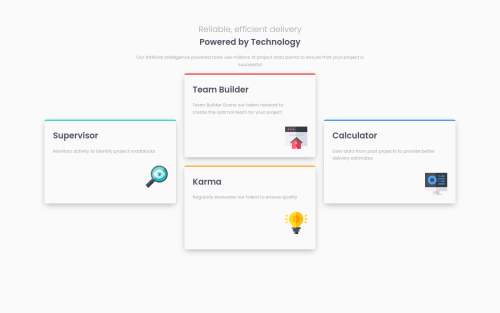Submitted over 3 years agoA solution to the Four card feature section challenge
Four Card Feature Section
sass/scss
@AnazAnoiar69

Solution retrospective
Hi need advice for responsive font size 🙏
Code
Loading...
Please log in to post a comment
Log in with GitHubCommunity feedback
No feedback yet. Be the first to give feedback on Anaz Anoiar's solution.
Join our Discord community
Join thousands of Frontend Mentor community members taking the challenges, sharing resources, helping each other, and chatting about all things front-end!
Join our Discord